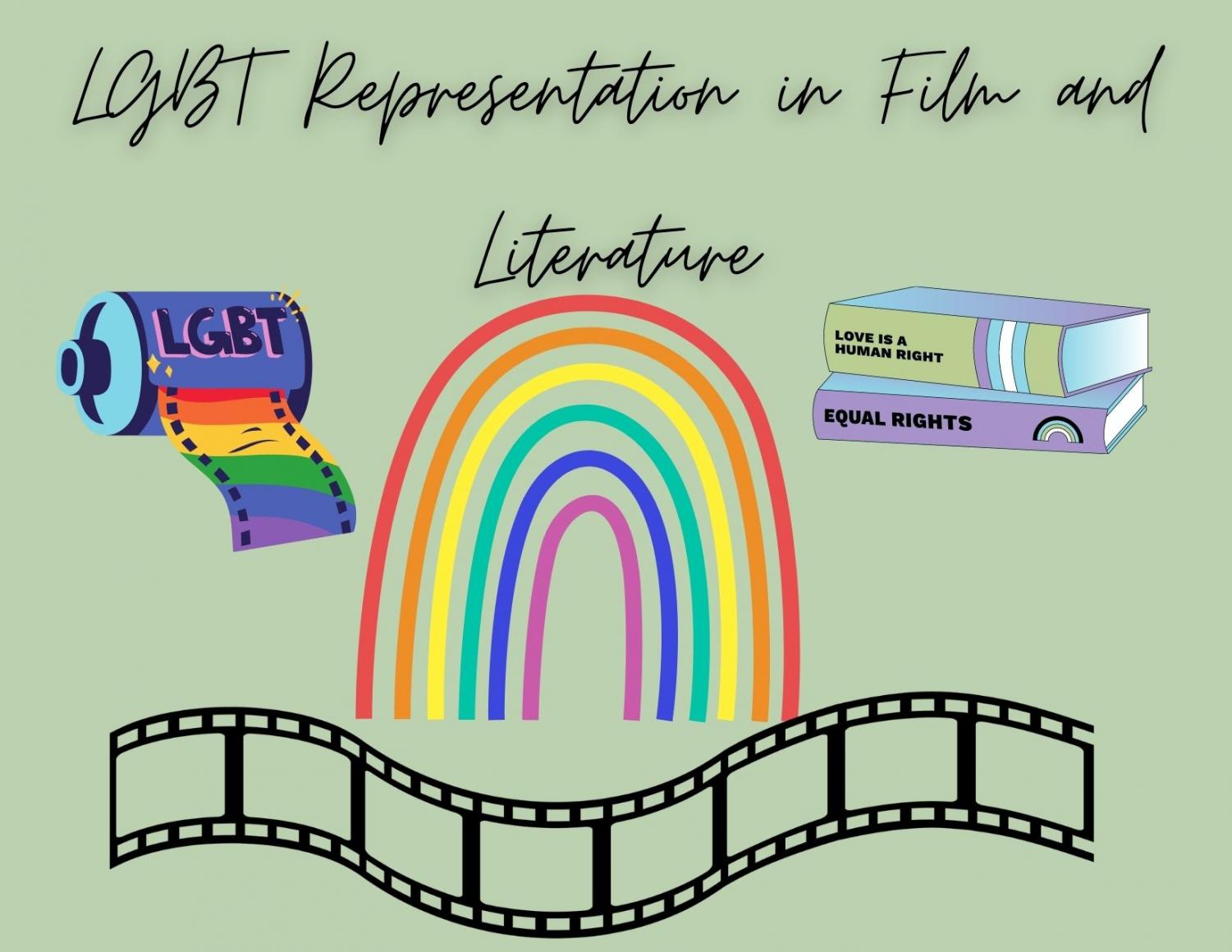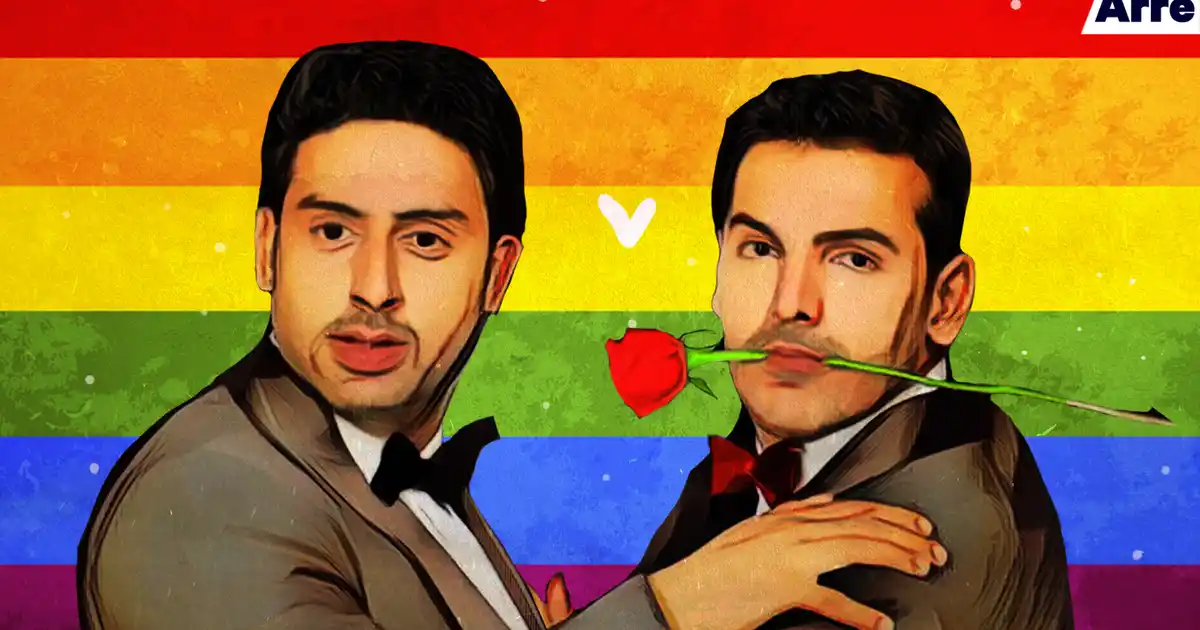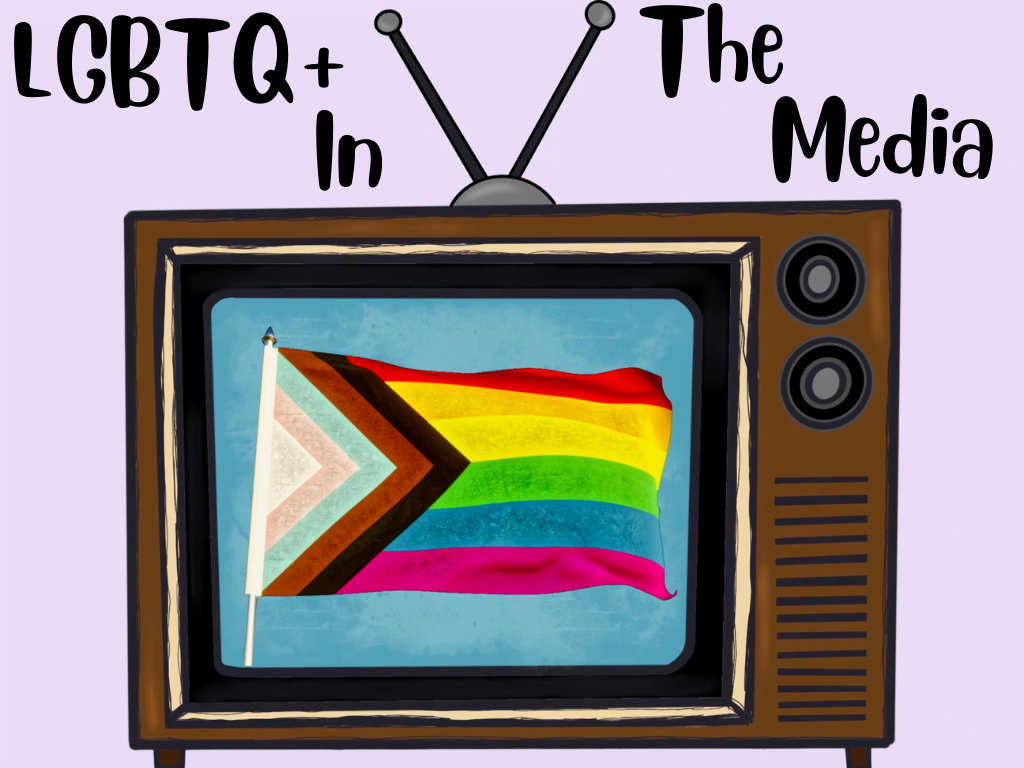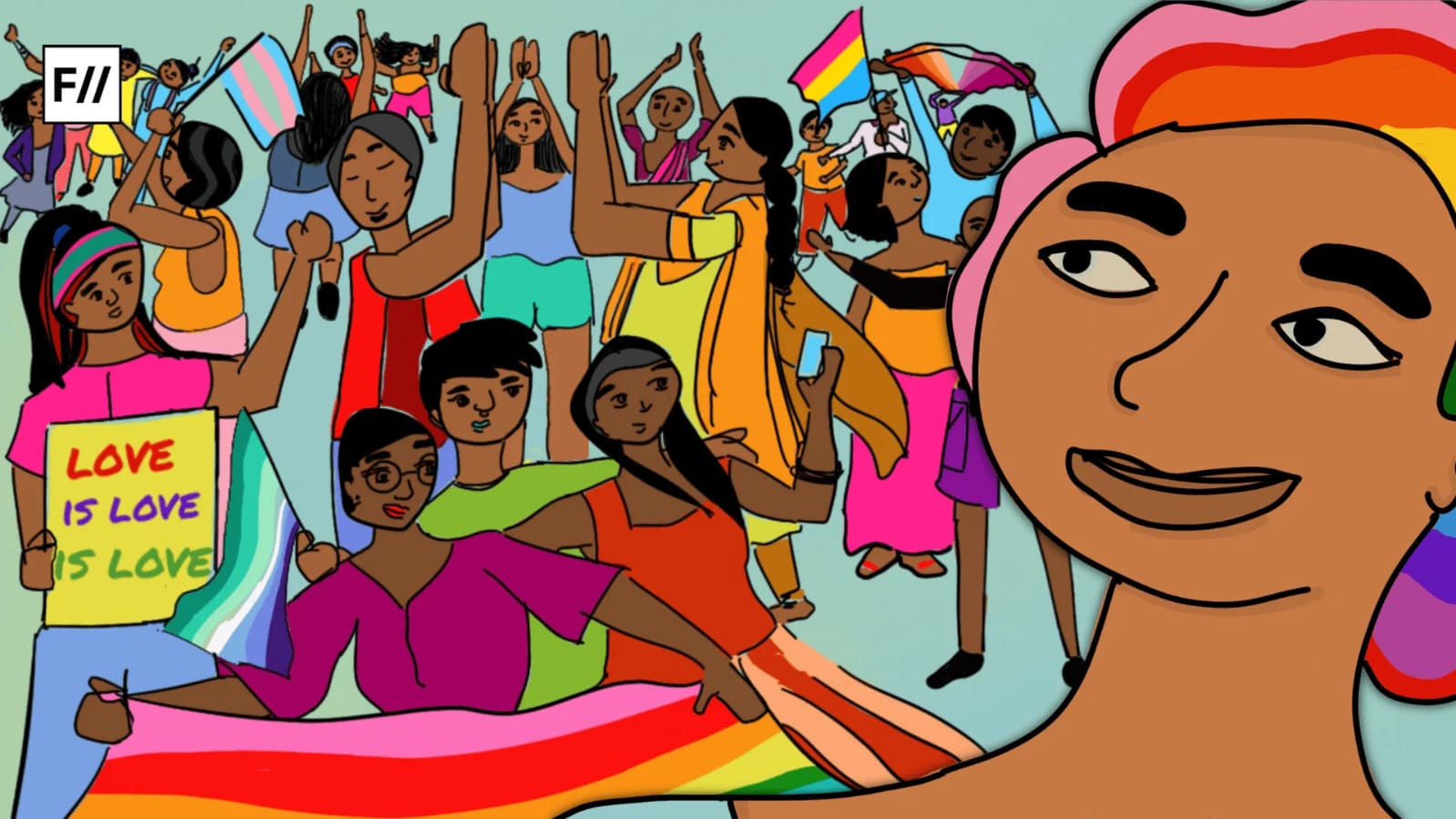Editor’s Note: FII’s #MoodOfTheMonth for June 2022 is Pride Solidarity. We invite submissions on the many layers of this theme throughout the month. If you’d like to contribute, kindly refer to our submission guidelines and email your articles to sukanya@feminisminindia.com
It is believed that what we prefer as entertainment says a lot about us. I suppose one could also argue that the kind of cinema they enjoy could be a reflection of their personality, and serve as a mirror towards knowing themself better. It’s also a gateway to figuring out what kind of change we wish to see. I was compelled to ask myself, “Do I care about LGBTQIA+ visibility and acknowledgment in films and television shows as much as I believe I do?“
Movies and series make it a lot easier for us to relate to having affection for the opposite sex if we are heterosexual. When you’re a member of the LGBTQIA+ community, you would have a better chance of telling your parents that you have an alcohol or smoking addiction than be open about your sexual identity, except if you are in a safe space. That is why in season 4 of Stranger Things, Robin could not be open about her sexuality, as she fears asking out the wrong girl could mean being shunned and termed a ‘town pariah‘.
The representation of queer love, friendships, and relationships in popular culture is skewed but becoming more visible. Although everyone agrees that the queer community deserves better representation, the systemic barriers to generating more employment possibilities for queer artists are rarely addressed in this context. India seems to be welcoming queer and trans stories on screen and OTT platforms, which is complicated given that same-sex marriages are not allowed in India, although homosexuality was decriminalised following the landmark Supreme Court judgment in 2018.

Queer representation in diverse entertainment bodies
Hollywood has been a site for showcasing characters from the LGBTQIA+ communities. The representation of subjects like slavery, interracial relationships, and homosexuality were catered for the White audience, and although Hollywood is known to have created many queer stories, the process is not necessarily gay-friendly.
According to an article by Deadline, a survey of 5,700 SAG-AFTRA members has found that more than half of lesbian, gay, and bisexual performers “have heard directors and producers make anti-gay comments about actors”, and that “53 percent of LGBTQIA+ respondents believed that directors and producers are biased against LGBTQIA+ performers.”
Coming-of-age stories that include a diverse range of queer identities and experiences are uncommon. We aren’t used to seeing LGBTQIA+ characters live to see the finale of a show, but we are used to seeing queer grief and anguish play out on screen.
The Where We Are on TV GLAAD report in 2019 revealed that there were more LGBTQIA+ characters on primetime television than ever before. Among all streaming platforms, Netflix had the most LGBTQIA+ characters, with shows including Orange Is the New Black, Queer Eye, Grace and Frankie, Sex Education, and Sense8, retaining audiences throughout the last decade.
Whether it’s Heartstopper or Crush, which brought fresh tales of queer love to our watchlists in 2022, or Young Royals, a Swedish drama that explores the lives of royalty to represent the community, it is incredible to see them break ground. BL (Boy Love), a genre embodying LGBTQIA+ experiences in Asian culture and whose popularity is only growing, is also explored in Thai productions like Kinn Porsche.
When brands turn their logos pride-themed and slap a rainbow on each product or name them something as ridiculous as ‘Pride Whopper‘, you know it’s that time of the year. I do not need to list down all the ‘pride-friendly‘ products in the market. The queer community is not a profit-mongering entity. Queer individuals are so much more than their sexuality, they are talented, have the same rights, and most of all, queer lives matter

India has seen queer representation in movies like Badhaai Do which did it right, and Chandigarh Kare Aashiqui which did not. There were many conversations around Vijay Raaz, a cisgender man playing a trans madam in Gangubai Kathiawadi, and Vaani Kapoor’s portrayal of a trans woman instead of a trans actor in Chandigarh Kare Aashiqui.
Before announcing that she doesn’t view herself as a woman and believes herself gender-neutral, Konkana Sen Sharma starred in Netflix’s Geeli Pucchi, which was part of the anthology show Ajeeb Dastaans, and in which she portrayed a queer character that won her several accolades.
Dostana, a film considered one of the first mainstream Bollywood movies depicting gay characters showcased them in a somewhat positive but extremely problematic manner. Abhishek Bachchan and John Abraham’s characters imbibed all the stereotypical ascriptions that gay characters are subjected to – weird body movements, check. Bizarre fashion sense, check. Exaggerated mannerisms, double-check.
Aligarh accurately depicted the dreadful stigma that Section 377 had instilled in LGBTQIA+ people, while Margarita with a Straw acknowledged bisexuality. While Fawad Khan’s portrayal of a gay man in Kapoor & Sons was multifaceted and honest, it was unfortunately sidelined without further exploration.
Bollywood manages to portray these necessary stories, but they are never seen as mainstream films while mainstream films that do feature queer characters are plagued with stereotypes that make it impossible to watch them. Hence, the community lacks the authenticity of recognition it deserves.

Consider a female actor taking on the role of a male character. Why is she playing it while there are males there, or how could she effectively represent males when she isn’t one? Shouldn’t the same question be asked when a straight man portrays a trans or homosexual character?
Eddie Redmayne’s portrayal of Lili Elbe, a trans woman, in The Danish Girl drew criticism and led to the actor confessing that he regrets taking on the part. Cisgender men make up the majority of Hollywood actors who have received awards for portraying gay roles. From Rami Malek’s controversial portrayal of Freddie Mercury in Bohemian Rhapsody, which was accused of erasing the singer’s sexuality, to Mahershala Ali’s portrayal of gay pianist Dr. Don Shirley in Green Book, Jared Leto as an HIV-positive trans woman in Dallas Buyers Club, and Sean Penn’s portrayal of Harvey Milk, a famous gay rights activist and California’s first openly gay elected official in Milk to Olivia Colman’s role of Queen Anne of England in The Favourite, the list of straight actors donning queer roles are endless.
Three out of four acting honours went to heterosexual actors (Rami Malek, Olivia Colman, and Mahershala Ali) for playing LGBTQIA+ roles at the 2019 Oscars, even though an openly gay man has never won the best actor Oscar.
Also read: Queer Representation In Cinema: Differentiating Between Tokenism And Authentic Storytelling
Rainbow washing and monetisation of Pride
While we are on the subject of representation, we cannot miss rainbow washing, every brand’s favourite activity for June. There is a fine line between allyship and publicity, which must be respected at all times. Telling LGBTQIA+ stories is as important as telling cisgender stories, if not more. We need as much representation as possible, but when this so-called representation only shows up for a mere 30 days and in ways that could create hype for one’s particular business, alarm bells tick off.
When brands turn their logos pride-themed and slap a rainbow on each product or name them something as ridiculous as ‘Pride Whopper‘, you know it’s that time of the year. I do not need to list down all the ‘pride-friendly‘ products in the market. The queer community is not a profit-mongering entity. Queer individuals are so much more than their sexuality, they are talented, have the same rights, and most of all, queer lives matter.
In recent years, every TV show has been driven to include at least one LGBTQIA+ character to demonstrate their inclusivity, but that is not what inclusivity entails. It becomes inclusive when we learn about the character’s backgrounds and witness how they interact and form relationships with others around them. A narrative is not inclusive if a character is simply ‘behaving queer‘

Queerbaiting and focusing on queer characters rather than queer narratives
Queerbaiting is a promotional tool in which writers of fiction or entertainment shows allude to the possibility of non-heterosexual relationships to attract queer and LGBTQIA+ viewers to their shows, without intently presenting such relationships or sexual encounters with authenticity.
Queer characters are either ignored or their narratives are written in such a way that they only serve to enhance the story of the main character. Their tale is no longer about them. Queer characters appear in mainstream series such as Euphoria, The Sex Lives of College Girls, The L Word: Generation Q, and Stranger Things, but whether they all tell queer tales is a different topic.
In recent years, every TV show has been driven to include at least one LGBTQIA+ character to demonstrate their inclusivity, but that is not what inclusivity entails. It becomes inclusive when we learn about the character’s backgrounds and witness how they interact and form relationships with others around them. A narrative is not inclusive if a character is simply ‘behaving queer.‘

The lack of a narrative for LGBTQIA+ characters can also be traced back to the story’s creation by straight writers. It’s not that heterosexual creators have never met a queer person, but it frequently feels as if they’re writing LGBTQIA+ characters to check a box or represent an entire group. These characters are reduced to one-dimensional parodies, and they come across as hollow, phony, and unrepresentative of queer experiences.
Cinema has a greater impact on us than any other type of media. I cannot be the only one who is affected by characters from movies and series long after I have finished watching them. That is the effect it carries. While popular culture may appear to be welcoming inclusive stories, if it does not also welcome LGBTQIA+ creators and artists, this decade’s queer awakening may be merely reduced to a ‘cliché trend‘.
Also read: Marketing The Rainbow: Queer Advertising Campaigns In India
Nuha Bubere is a journalism major, pursuing her BA in Multimedia and Mass Communication in Mumbai. She reads, educates herself and writes on topics that resonate with her being. She finds leisure in books and a companion in coffee. She is on Instagram, LinkedIn, Twitter and Facebook
Featured Image Source: Eastside Online




